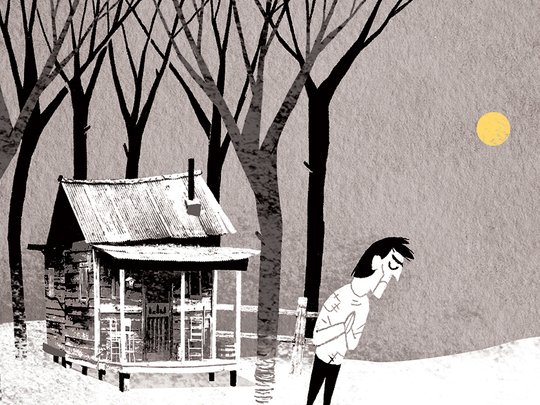
White Hunger
By Aki Ollikainen, translated by Emily Jeremiah and Fleur Jeremiah, Peirene Press Ltd, 128 pages, $17.03
Only two lifespans separate us from the last naturally occurring famine in Europe, the Finnish famine of 1867. The conditions described in this brief novel, however, are removed from the well-fed reader by several orders of experience.
There is bread made from lichen (very unwise; it’s often poisonous), pine bark, or even, in a way that brings the nursery rhyme beginning “fee-fi-fo-fum” horribly to life, the ground bones of corpses. Dogs are found eviscerated for their innards on the side of the road.
There is a stream of starving peasantry heading south, towards Helsinki or even St Petersburg, where they imagine no one can be allowed to starve; they are often denounced as thieves, and the best they can expect to be given is a bowl of thin gruel. Should they eat too much of it at once, their stomachs will burst.
“White Hunger” is Aki Ollikainen’s debut work, but it is written with the control of someone who has mastered the form. It has won four of Finland’s literary prizes, and I imagine this is not only down to the spare, taut prose, but to the way in which it documents one of the most painful periods of Finnish history.
There are one or two nuances that may be lost on foreign readers: the town of Katajanokka, “with its hastily erected wooden shacks that seem to tilt in new directions after every gust of wind”, is now a very des res district of Helsinki; and the 19th-century senator whose thoughts we eavesdrop on in a couple of brief chapters is the finance minister Johan Vilhelm Snellman.
It is his programme of financial austerity in the face of a currency crisis (talk about a bit of understated historical resonance), together with the demands of Rothschild’s bank, that compound the misery caused by the failure of two successive harvests. Add to this summer temperatures some 8-10 degrees below the norm, and disaster follows.
The skill of this novella lies in the way it portrays hunger without becoming monotonous. When Knut Hamsun wrote his novel “Hunger” in 1890, the subject itself had become, largely, a metaphor, a window into a deranged psyche and the trigger for formal experimentation. In “White Hunger” we have the simple brute fact of it, and the things it drives people to before they succumb to it. (The famine killed 15 to 20 per cent of the population; a higher proportion of the book’s characters die on the way. You would do well not to get too attached to any of them.)
Here we have people at the very margins of their own humanity; only those who have eaten recently are able to make any speech longer than a few gasped phrases. It’s a short book that feels more substantial, because Ollikainen (who lives in the north of the country, and so presumably has some personal investment in its history) shows us the white expanses, and follows the trudging figures with pitiless fidelity, as they slowly move from one starving, hovel-ridden village to the next.
Sounds like a hoot, doesn’t it? But there’s a rewarding toughness behind this akin to the admirable Finnish quality “sisu”, which — although not explicitly referred to here — translates as something like a combination of pluck and doggedness, the sense that anything can be thrown at you and you’ll come through.
The book ends with hope, with the idea of a future; that it is from such catastrophes that nations are born. And this is all understated, giving the whole work an existential air.
–Guardian News & Media Ltd









